Material Girl: An interview with artist Naomi Gilon
Art — 03.08.22
Interview: Nino Sichinava
Special thanks to Naomi Gilon
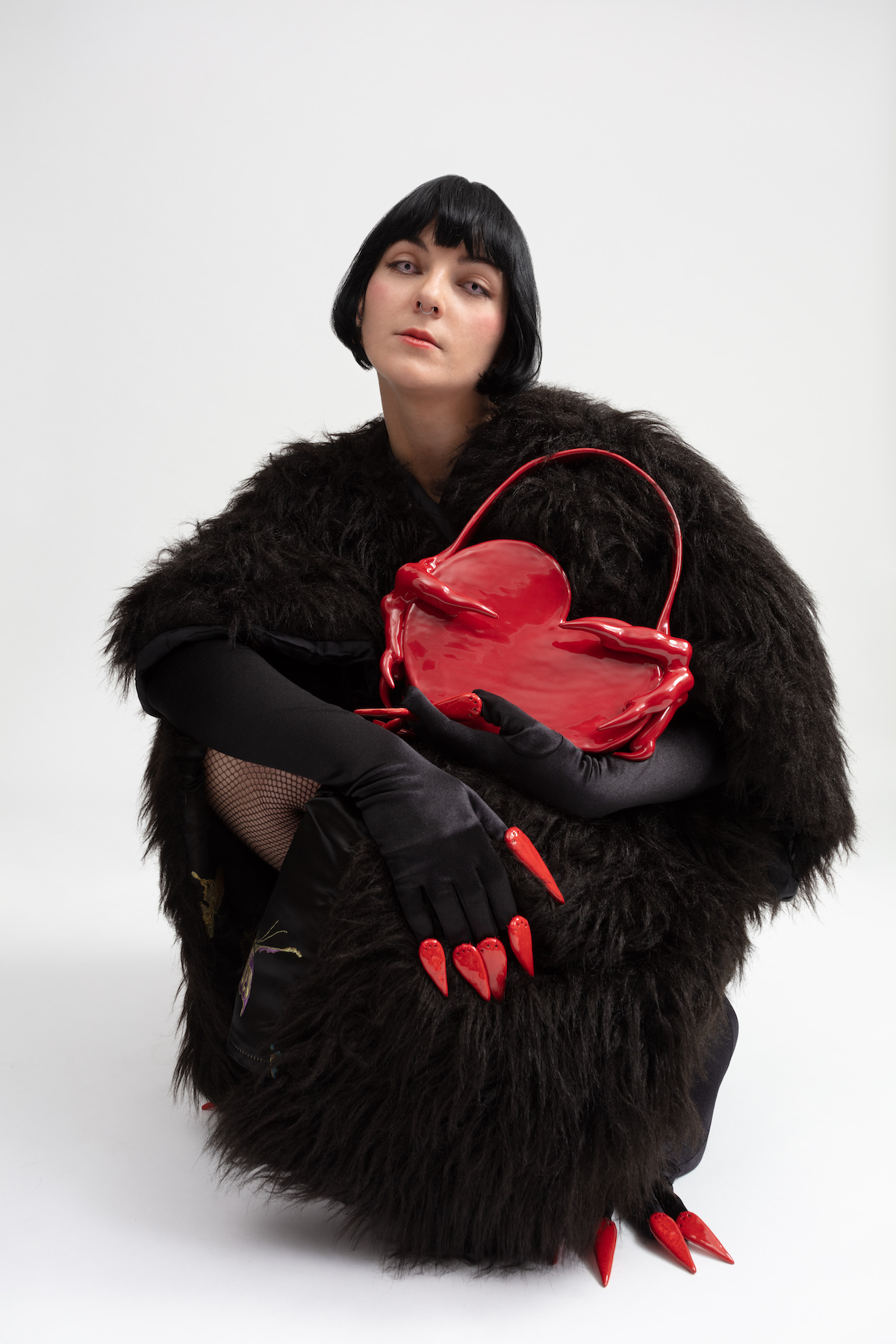
La Femme en fourrure
Portrait by Andy Simon
Naomi Gilon is a Belgium-born multidisciplinary artist, whose creative endurance has drawn attention to both the art and fashion world. With her unorthodox approach to hybridization and fearless experimentations, she breaks all canons of art and sets her own extraordinary vision on very ordinary things.
When creating her ceramic artworks, she plays around with the concept of beauty fusing it with mythological and horror tones. At a young age, Naomi used this approach and dared to change a common relationship between art with fashion. She is one of those artists who managed to reshape objective art, inhaling youthfulness and desirous freshness into her aesthetic with her signature artworks featured and displayed all over the world.
Teeth chats with Naomi about her creative endurance, rise as an artist, collaborations, and so much more.
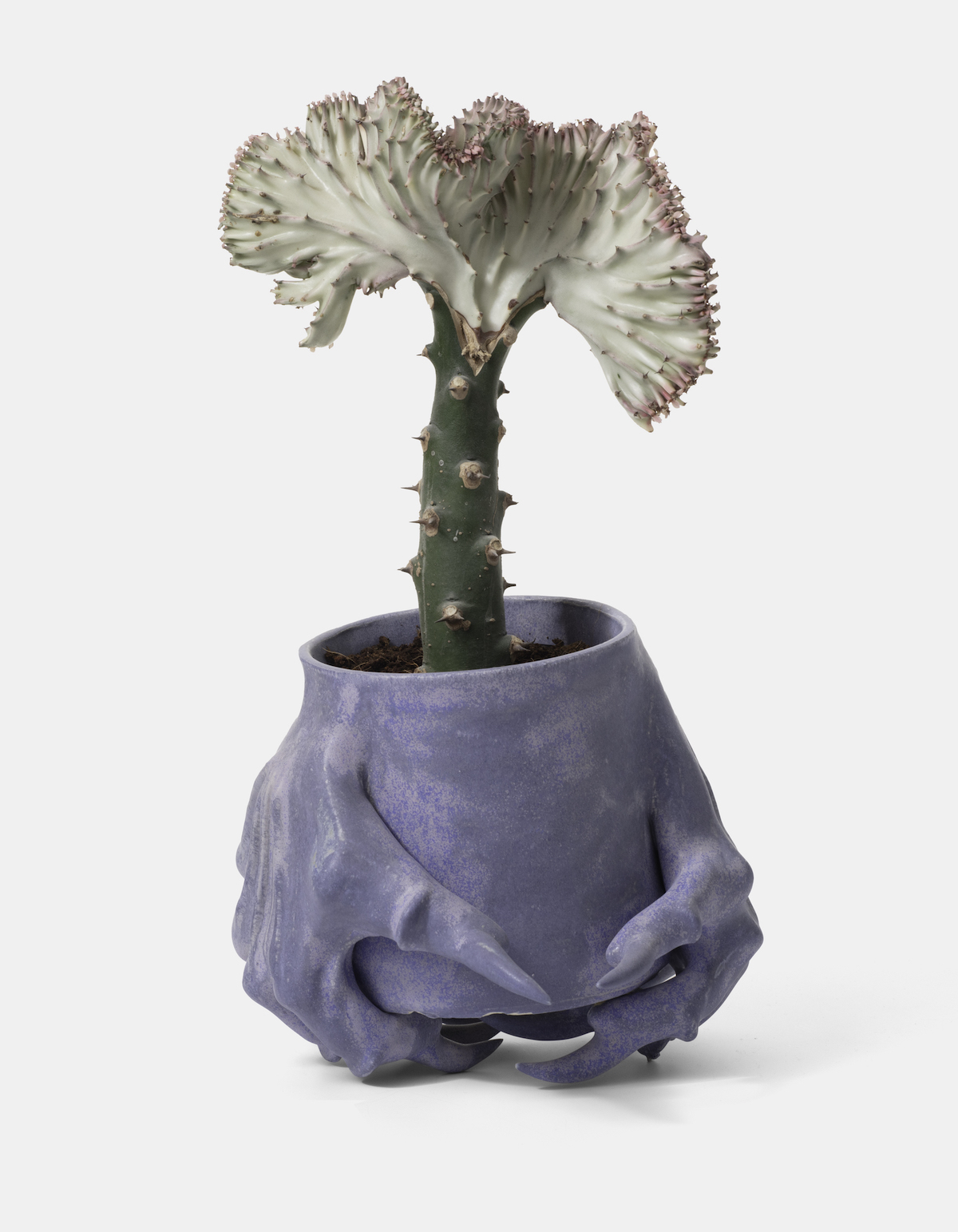
Monstrous flowerpot, stoneware ceramic, 16 x 17.5 cm, 2020
Photo by Andy Simon
How would you say that your creative vision and aesthetic were formed? Do you have any childhood memories of how your interests led to art?
My mom is an interior designer, so me and my brother were brought up in a creative world. Touching everyone, doing things by yourself, adding our personal touch to everyday things.
As a little girl, I preferred to take drawing, theater, and sculpture lessons rather than classical dance like all my friends.
My passion doesn’t come from nowhere [sic], I have always been put in the category of artists. I obviously experienced a period of doubt during my teenage years, but my parents always supported me in my choices and pushed me to choose the path in which I felt best. My need to create is essential, almost vital. I have the need to undertake projects, to express my desires and my questions through art. Making a living doing what I love has always been my goal, you have to be persistent and love challenges.
Your art is a combination and hybridization of very opposite items and materials. How did you come up with this artistic approach?
It was during my years of study at the La Cambre school in Brussels that I identified and affirmed this work process.
I have always liked materials that imitate, that give the illusion of that which shines and which reflects. Atypical things that convey emotions, the personality of the person behind. In this way, I immersed myself in the world of car tuning. I’ve always loved this repertoire of kitsch and very honest images.
Subsequently, I delved into the subject a lot with readings and sociological analyzes of popular culture. Through it, I rediscovered science fiction literature and the cinematic style of horror and gore. The characteristic I love most about sci-fi is that it was born to offer a “new frontier” to people; beyond the past and the present. In addition, it’s a reflection of the social representations of an era. SF literature has the capacity to contribute to the invention of these representations, but also to modify them. This literature also allows societies to reflect on themselves and on what they generate.
The desire of my artistic works is to produce this same type of reflection but in the form of anthropomorphic objects.
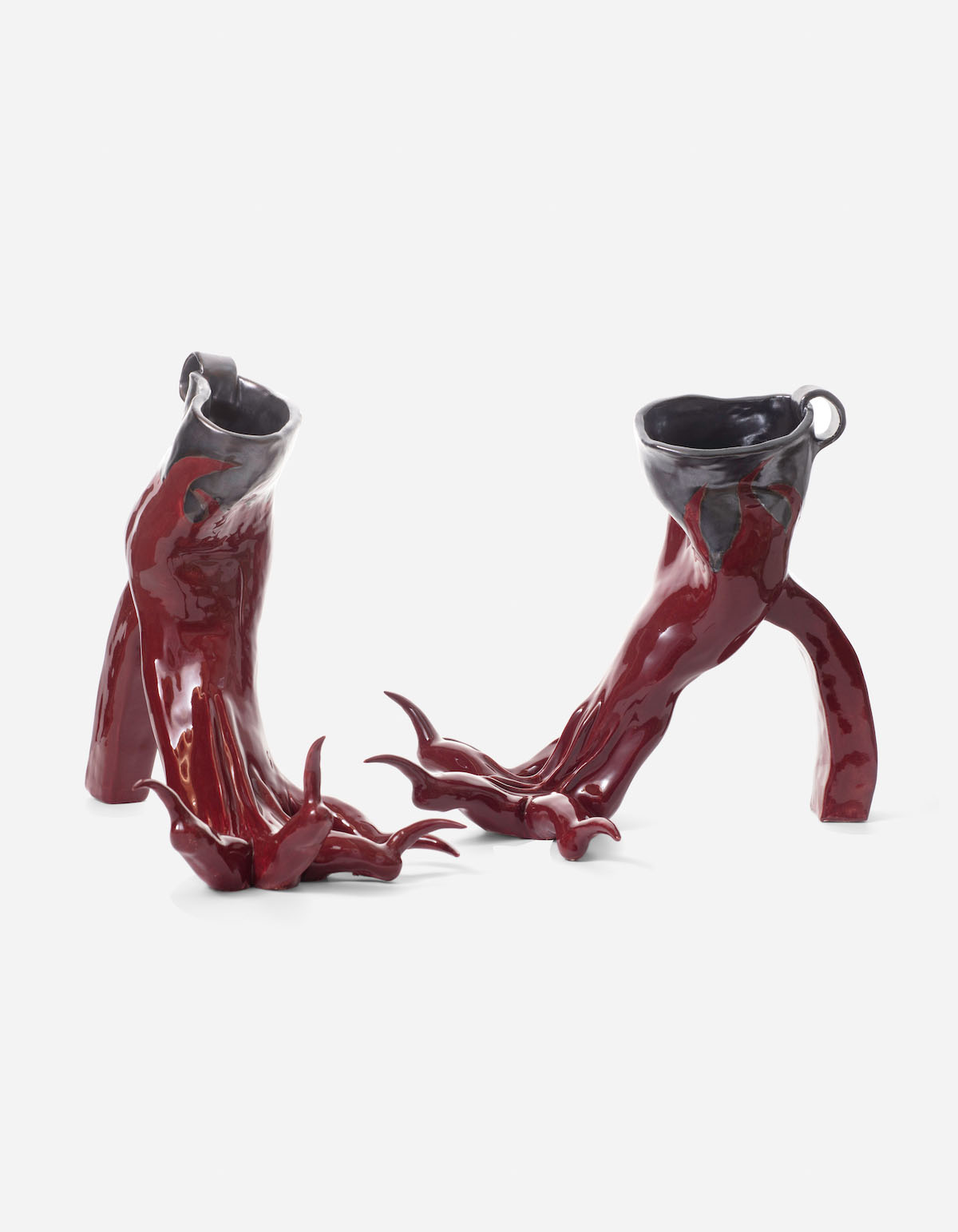
Boots Flames, Pas Courant, enameled ceramics, 70 × 80 × 30 cm, 2019,
“Int/Ext”, group show, Encore Brussels Gallery, 2019
Photo by Andy Simon
Can you tell us a little bit about your experiments as an artist? How do you start working on new ideas? Where do they stem from?
My ideas are very spontaneous. I regularly draw quick sketches when I’m not in my studio so I don’t forget. My projects come from the way I look at things, and how I conceive of the object. Or when I have to think about the scenography of an exhibition, I first have 2-3 works that I want to present but in order for the whole to tell a story, I have to add other elements. So sometimes this type of situation helps me create new pieces.
The principle of hybridization occurs naturally. I like to design ambiguous or bizarre objects. Each time my paws are unique, I don’t use a plaster mold because each time I like to give the energy that I feel when I make my ceramic. My bags or certain model of shoes are made in the form of a pattern so that I can make regular cuts in my clay plates. I put the initial object together and then add my monstrous growths to it.
Which artists do you admire and inspire your work?
Hannah Levy
Miki Kim
Kyle Kogut
Saelia Aparicio
Genesis Belanger
David Rappeneau
A lot of brands are starting to create utility objects prizing the design and beauty of an object. Do you think fashion today is rapidly building a unified bridge with art or vice versa, gradually changing the perception of fashion? Do you think such collaborations can be the beginning of a new era in fashion?
Fashion has been inspired by visual art and vice versa for many years. The interesting thing is when things get popular, there is the risk of becoming a fashion effect; adored then forgotten, which is linked with capitalism and human dissatisfaction. Or to become iconic; freeze in time forever. These are two sides of fashion that inspires me a lot in my work, I play with this temporal aspect.
Because fashion is also a timeline, it is a reflection of evolution and change. Crises and wars have shaped its objects. Our needs change and so fashion adapts to these changes, but it’s very difficult to change the way we perceive things. It’s a long process that does not depend only on it (politics, the economy are sources of influence). Therefore, the role of art and the artist is essential in order to raise awareness. I don’t think this role will change, but maybe it will open up to a wider population.
What I find interesting about my work is that I wonder about these topics; fashion, popularization of things, and their impact on people. Then serious actors in this environment come to see me to ask me for collaborations. It’s a bit of an ironic situation. Because even if my desire isn’t to denounce, I still underline some founding elements that are sometimes forgotten because they’re not very shiny, and I make a beautiful, fragile, and monstrous hybrid object. This’s also why I’m so attached to ceramics. This medium creates an opposing relationship between matter and subject.
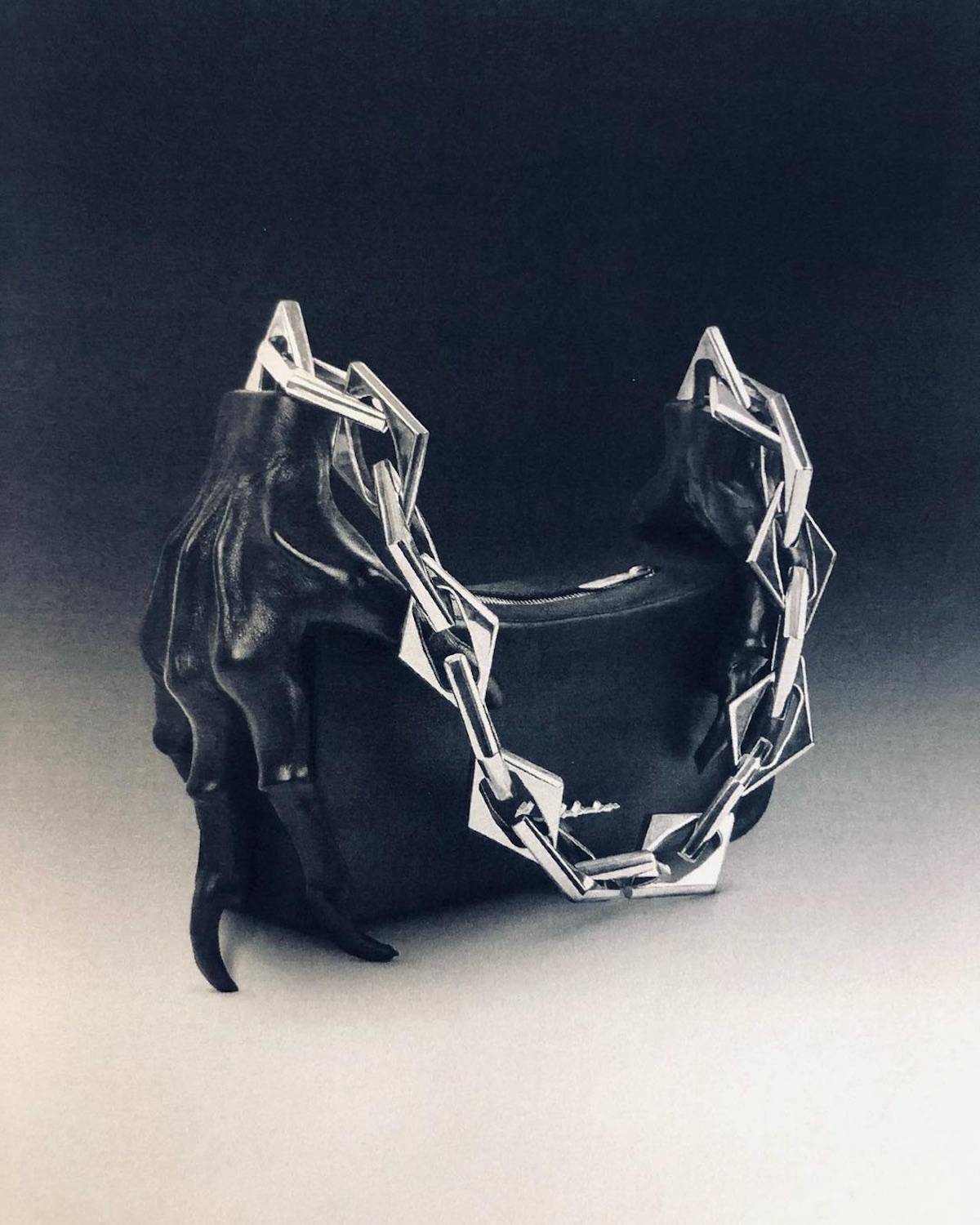
Bag, Naomi Gilon × Han Kjøbenhavn SS22
How did you come up with the idea to create ceramic handbags? What led you to collaborate on leather products with Han Kjøbenhavn?
Good question. Actually, like most of my ideas, it was just a desire. My series of bags follows from my monstrous shoes. This is the next logical step. And let’s say that I absolutely didn’t expect this explosion of visibility. From that moment on, my work circulated a lot and I started to receive proposals for projects, collaboration, etc.
Han Kjøbenhavn was the first to offer me the opportunity to export this textile design. I saw this project as a way for my work to become an everyday object and more accessible than my sculptures. Breaking the imaginary border of Art which would be for a bourgeois and intellectual social class.
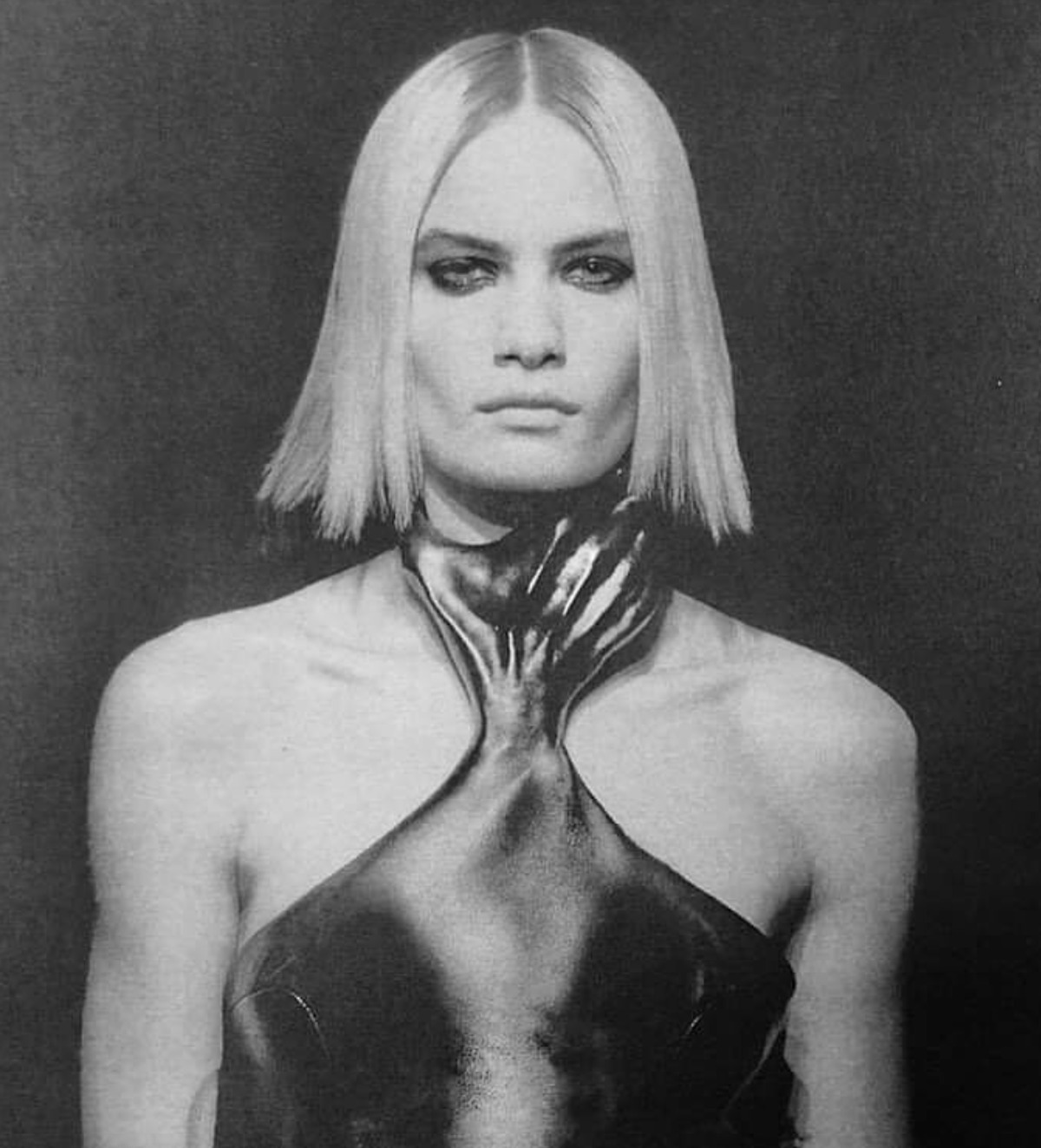
Naomi Gilon x Han Kjøbenhavn SS22
Can we talk about your collaboration with Han Kjøbenhavn more? How did you feel about designing a very wearable piece of art? Did you put any deeper meanings behind it?
I was very happy. My sculptures access another dimension, they keep their statues of works even made of leather. But the relationship is more direct with the public. We can handle it without being afraid of breaking it, we establish a tactile link. It becomes usable. And as said previously, we’re breaking down a social border. It’s with this type of collaboration that it’s possible to submit a reflection to the general public and also thanks to the media influence of the 21st century.
Often I have the impression that my works say to me: Look at the monster that I have become! The popular aspect is scary, the system that consumes them is scary. The hands symbolize the idea of being manipulated. You buy me but I own you.
We’re in a changing world and the unknown scares us.
It’s no secret that you have a very bold artistic language, you use deconstructed mythological and folkloristic themes that question the common understanding of beauty. How would you describe your philosophy as an artist? Do you have any eagerness to bring waves of artistic change into the fashion industry?
Telling a story is what is important. In our society of reason, it’s necessary to know how to leave room for the imagination. We have the capacity to go beyond our reality. I’m not talking to you about drug use. It’s a matter of how we look at the things around us. Seeing things differently. I’m not trying to revolutionize or change anything but to convey emotions by telling stories. As if we were having a daydream or a nightmare.
Do you set your own rules when it comes to your art?
There is only one rule to never forget: always be sincere in your work.
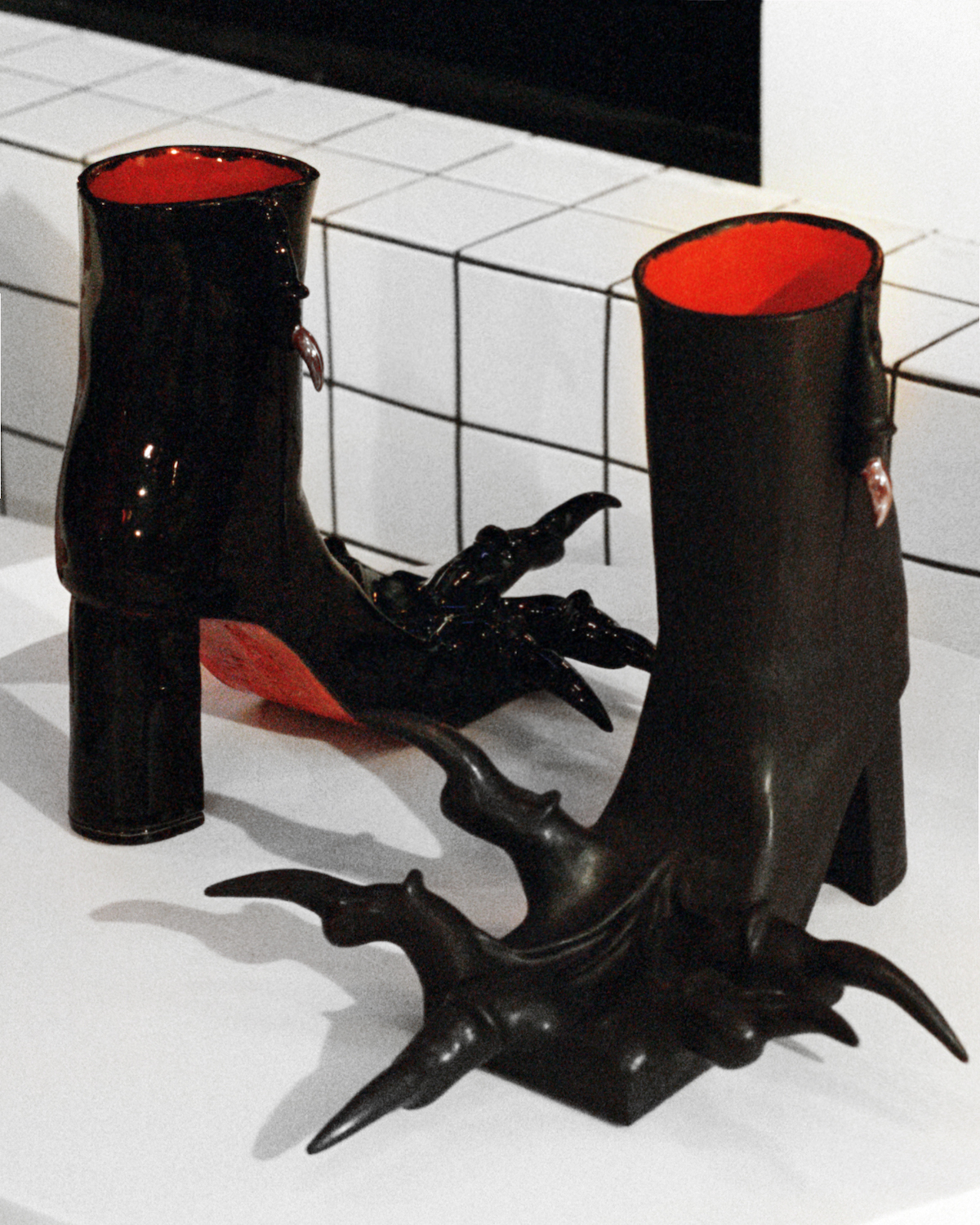
Shoes for Sintezia
What does it mean to you to be a multidisciplinary artist? How you would describe your contribution to culture? What are your biggest milestones?
It seems to me that it is important for an artist to test different mediums. We experiment and perceive our work from new angles. Personally, I find it more stimulating to vary the support. My work is certainly part of the cultural world, but I cannot say what it brings to it. It would take an outside person’s gaze to answer this question because I, selfishly, do this for myself first. My work is me, it expresses all that I am.
What more would I like to accomplish? Monumental works. At least having the opportunity to do it once in my life. But otherwise, I don’t want to anticipate the future stages of my career as an artist. My goal is simply to be fulfilled in my art and to have the opportunity to express my imagination until the end of my life.
What’s next for Naomi Gilon?
I have several exhibitions to prepare before the end of the year so I will focus on that first. I hope for more collaborations. And then I really wanted to create a fictional character around my work. So I think this year will start with the development of this new idea.
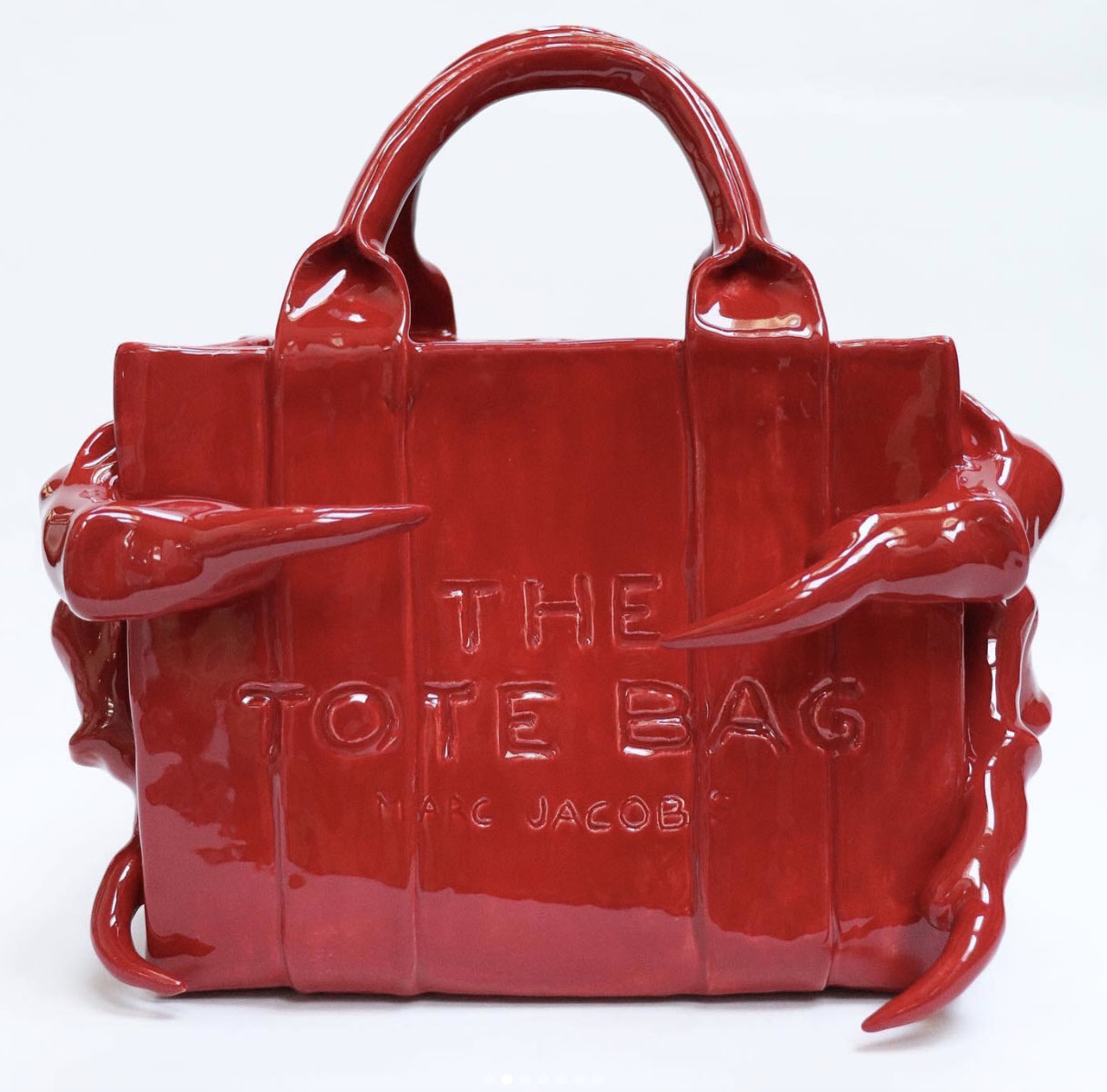
Ceramic bag collaboration with Marc Jacobs
Can you please tell us about your latest collaboration with Marc Jacobs? How did it transpire? How did you feel while working on it?
I got this request during my vacation. I admit that I was surprised and super excited to have the opportunity to work on the basis of Marc Jacobs bag models. Reproducing objects is an interesting exercise because you have to follow a plan. As with my work with the Russian shoe brand Sintezia, I use the measurements of the real object and I make paper patterns before cutting my clay. Staying faithful requires great thoroughness.
I felt a sense of joy and a sense of achievement working in collaboration with Marc Jacobs because it is a brand with a reputation and an important history. To be able to take that into my work is just great. This shows once again that fashion and the visual arts create essential connections.
Naomi’s next solo show takes place in Milan in September 2022.
You can follow and stay up-to-date with Naomi via Instagram and purchase her pieces through her website.